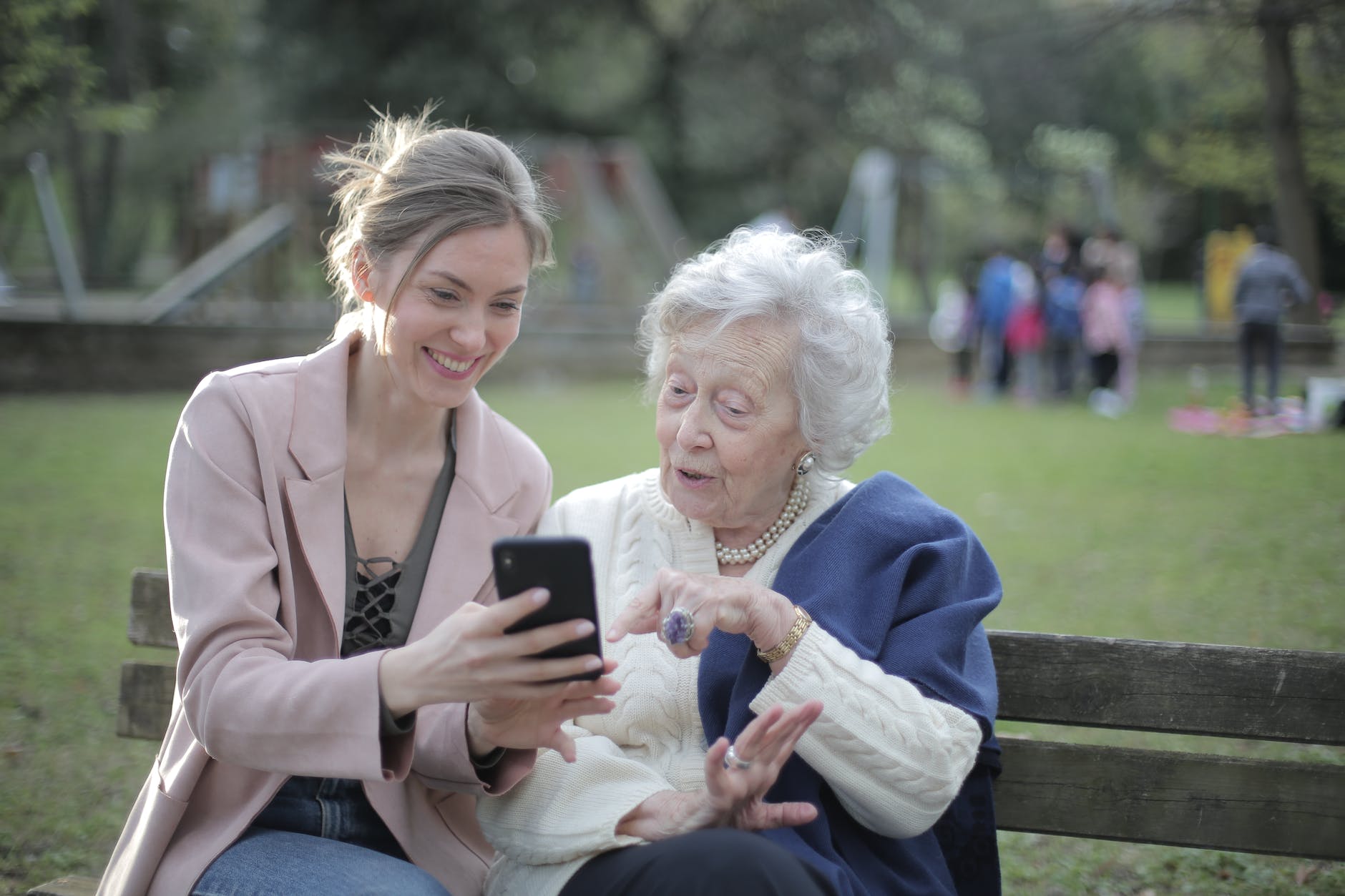Technological unfamiliarity has become a pervasive challenge that many seniors face. It refers to the lack of knowledge or understanding of modern technologies, hindering seniors from fully benefiting from them.
Considering the significant role technology plays in various aspects of our lives, from work to communication and beyond, being technologically familiar is crucial. We aim to explore the challenges posed by technological unfamiliarity and provide possible solutions to bridge the gap and empower seniors to navigate the digital landscape effectively.

Challenges of technological unfamiliarity
As technology continues to evolve at an unprecedented pace, seniors often find themselves facing numerous challenges due to their unfamiliarity with these advancements. These challenges can greatly hinder their ability to access information and resources, participate fully in a digitally-driven world, and expand their educational opportunities.
1. Limited access to information and resources.
Seniors who are not familiar with technology often face barriers in accessing valuable information and resources available online. This limited access can inhibit their ability to stay informed, obtain necessary services, and keep up with societal changes.
2. Digital divide and its implications.
The digital divide refers to the gap between those who have access to technology and those who do not. Due to factors such as socioeconomic status, seniors may be on the wrong side of this divide. This divide further exacerbates the challenges they face in terms of accessing online services, engaging with their communities, and staying connected with loved ones.
3. Inequality in educational opportunities.
Technology has become a vital component of education, providing new methods of learning and enhancing access to educational resources. However, seniors who are technologically unfamiliar often lack the opportunities to advance their education, acquire new skills, and participate in digital learning programs, leading to an inequality in educational opportunities.
4. Difficulty in navigating digital platforms and applications.
Seniors may struggle with the navigation of digital platforms and applications due to complex interfaces and unfamiliar functionality. This can prevent them from utilizing online services, conducting transactions, and staying connected with others.
5. Overwhelming user interfaces and technical jargon.
Many seniors find the user interfaces of digital platforms overwhelming, featuring small fonts, cluttered designs, and complex menus. Moreover, technical jargon can further discourage them from utilizing technology as they fear not understanding the terminology and making mistakes.
6. Fear of making mistakes and facing potential consequences.
Seniors often have a fear of making mistakes while using technology and facing potential consequences, such as inadvertently sharing personal information or falling victim to online scams. This fear can deter them from embracing technology and limit their overall digital engagement.
Addressing and overcoming these challenges is crucial for ensuring that seniors are not left behind in this rapidly advancing digital era. Efforts towards promoting digital literacy, designing user-friendly platforms, and providing accessible educational opportunities can help seniors navigate these obstacles and enjoy the benefits of technology. By bridging the technological divide, society can ensure equity and inclusion for all age groups in the digital realm.

Impacts of technological unfamiliarity
Technology plays a pivotal role in almost every aspect of our lives. From communication to shopping, learning to entertainment, technology has become an integral part of daily existence. However, for many senior citizens, this rapid technological advancement can pose challenges due to their unfamiliarity with digital devices.
Social isolation
One of the significant consequences of technological unfamiliarity among seniors is social isolation. Technology enables easier communication through various platforms like social media, video chats, and messaging apps. By not being proficient in these digital tools, seniors may miss out on connecting with loved ones, leading to feelings of loneliness and isolation.
Limited access to information
Without the ability to use search engines and surf the internet effectively, seniors face limited access to vital information. They might struggle to stay updated on current affairs, news, health-related findings, or even simple daily tasks such as checking the weather forecast.
Reduced independence
Technological unfamiliarity can diminish seniors’ independence due to their reliance on others for basic tasks. Mobile banking, online shopping, and making appointments online are just a few ways technology can empower individuals, but seniors may require assistance for these activities, leading to a sense of dependency.
Potential health risks
Seniors’ lack of familiarity with technology can also pose health risks. The ability to access telehealth services, online medication management systems, and health monitoring applications could prove beneficial, but a lack of understanding may hinder these potentially life-saving advancements.

Overcome technological unfamiliarity among seniors
As technology continues to advance at an unprecedented pace, it is important that we bridge the digital divide and ensure seniors can keep up with the ever-changing landscape of technology. Many seniors struggle with technological unfamiliarity, feeling disconnected from the digital world.
To address this issue, several solutions have emerged to empower seniors, enhancing their daily lives and providing new opportunities. Let’s explore some effective solutions below:
Digital literacy workshops with StrongLink technology
Organizing interactive digital literacy workshops with us can help familiarize seniors with technology basics. These workshops should be tailored to their needs, covering topics such as how to use smartphones, navigate social media platforms, and stay safe online. Experienced trainers can guide them step-by-step, ensuring they gain confidence and practical skills.
One-on-one personalized guidance
Providing individual assistance to seniors on an ongoing basis can significantly boost their technological literacy. This could include assigning tech-savvy volunteers or family members to guide them through basic tasks, answer questions, and troubleshoot issues patiently.
User-friendly devices and apps
Developers should focus on creating user-friendly devices, applications, and websites specifically designed with seniors in mind. Features such as larger fonts, simplified interfaces, and intuitive navigation can make technology more accessible and less intimidating to seniors.
Tech support hotlines
Establishing dedicated tech support hotlines specifically for seniors can offer timely assistance when they encounter problems. Staffed by patient and knowledgeable operators, these helplines can provide guidance over the phone and address seniors’ concerns in a friendly and understandable manner.
Senior-focused technology training centers
Setting up dedicated centers where seniors can have hands-on experience with various devices and technologies can greatly boost their confidence. These centers can provide free access to computers, tablets, or smartphones and offer personalized training sessions with expert volunteers.
By implementing these solutions, we can empower seniors to overcome technological unfamiliarity and embrace the countless benefits technology offers. It’s crucial to acknowledge that it may take time for seniors to adapt, and patience is key throughout the process. With appropriate support and tailored solutions, seniors can confidently embrace technology, enhancing their lives and reducing the digital divide.

Undeniable importance of education for seniors
Education is often associated with younger individuals striving to build their careers. However, education plays an equally crucial role in the lives of seniors. Promoting lifelong learning among this demographic not only fosters personal growth and mental stimulation but also contributes to improved overall well-being and a more fulfilling life.
Cognitive enhancement
Education keeps the mind active and sharp, beneficially impacting cognitive function. Engaging in learning activities helps seniors improve their memory, concentration, and critical thinking skills. Ongoing intellectual challenges stimulate the brain and promote the growth of new neural pathways, reducing the risk of cognitive decline and age-related cognitive diseases like dementia.
Social interaction
Seniors who participate in educational programs or classes connect with other like-minded individuals, fostering social interactions and creating a sense of belonging. This aspect of education helps combat loneliness, one of the biggest challenges faced by older adults, and provides opportunities to build new friendships and support networks.
Empowerment and confidence
Learning new skills, whether it’s a foreign language, technology literacy, or artistic pursuits, empowers seniors to stay independent and embrace new experiences. Acquiring knowledge and skills gives them a sense of accomplishment and confidence. Increased self-esteem and personal growth are invaluable assets in maintaining a positive outlook on life, especially as they navigate the later stages.
Health benefits
Education positively impacts not only mental health but also physical well-being. Engaging in intellectually stimulating activities can decrease the risk of anxiety, depression, and other mental health issues. Additionally, studies have shown that seniors with higher levels of education tend to lead healthier lifestyles, make better health decisions, and experience better overall health outcomes.
Solutions to bridge the technology gap
Seniors face unique challenges when it comes to navigating the rapidly evolving world of technology. From unfamiliar interfaces to complex devices, the learning curve can be daunting. However, there are solutions available to bridge this gap.
Patient and personalized training programs, easy-to-use devices designed with seniors in mind, and ongoing support from family and friends can all help seniors embrace technology and enjoy its benefits. By addressing these challenges head-on, we can ensure that seniors are not left behind in the digital age, but rather empowered to participate fully in the modern world.






